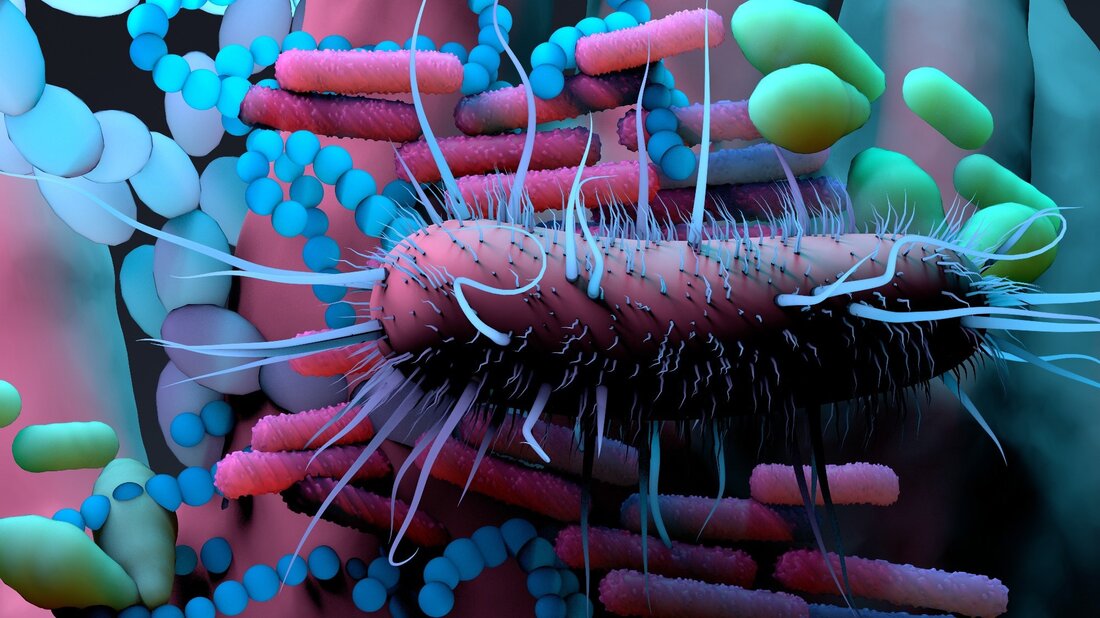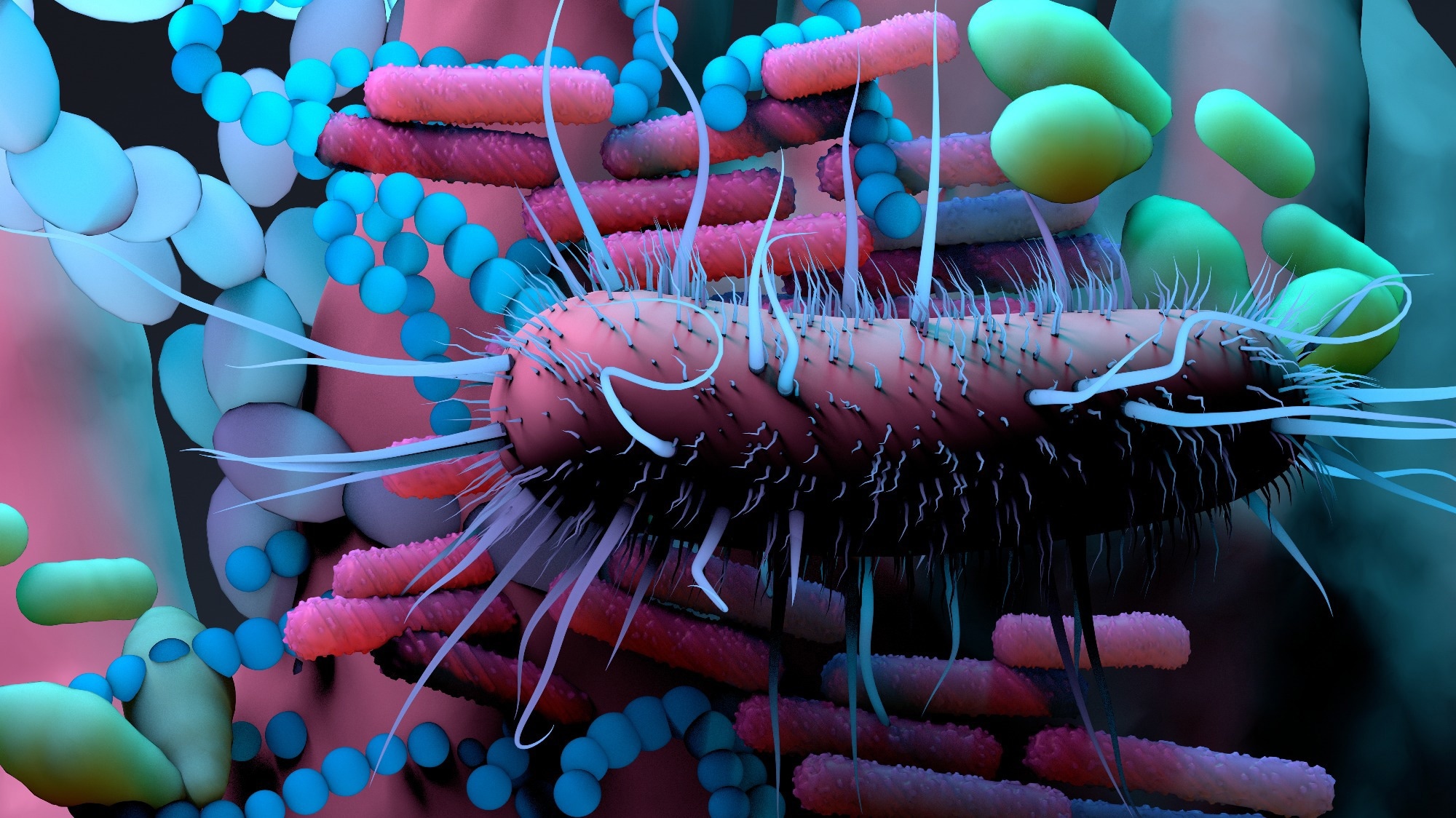The vaginal microbiome through the lens of systems biology
The human organism is a complex ecosystem of coexisting microbiomes, including those in the gut, skin and vagina in women. These play a crucial role in health and illness. However, there is still a lot to learn about them. A new paper recently published online in Trends in Microbiology journal reviews the systems biology approach to studying the vaginal microbiome (VMB), which helps understand its composition and function, as well as the mechanisms by which it interacts with the host. Review: New perspectives into the vaginal microbiome with systems biology. Image credit: Design_Cells / Shutterstock Introduction The VMB is for...

The vaginal microbiome through the lens of systems biology
The human organism is a complex ecosystem of coexisting microbiomes, including those in the gut, skin and vagina in women. These play a crucial role in health and illness. However, there is still a lot to learn about them.
A new paper recently published online in Trends in Microbiology The journal reviews the systems biology approach to studying the vaginal microbiome (VMB), which helps understand its composition and function, as well as the mechanisms by which it interacts with the host.

introduction
The VMB is crucial to female fertility, and disorders can be associated with pregnancy disorders, gynecological diseases such as pelvic inflammatory disease (PID), and a number of infections affecting the female urogenital and reproductive tract. Additionally, the VMB may help influence drug effectiveness in women.
However, the VMB is poorly understood, apart from a vague idea that a predominance of Lactobacillus is associated with a “good” condition with a homogeneous community structure. Conversely, an undesirable state of the VMB occurs when more diverse species are identified in greater abundance.
This latter suboptimal condition is often associated with bacterial vaginosis (BV), which occurs in one in three women during their reproductive years and can have serious consequences for their fertility. Therefore, research in this area is needed to understand the direction and extent of such associations.
The problem
Although many studies have been conducted in this area, it is difficult to understand what an optimal VMB looks like due to the complex interactions between microbes and other host factors. This means that healthy VMB can vary significantly from woman to woman and at different points in the life cycle of the same person.
Such changes occur within days, in contrast to the much slower change observed in the gut, skin and oral microbiomes, which can change over months or even years. Unfortunately, this makes cross-sectional data quite unrepresentative for studying the association of VMB composition, function, and disease—and thus makes most of these data less useful than they could be.
Here again, the human VMB differs significantly from that of animals and culture-based models. In the former case, even non-human primates do not exhibit the characteristic conditions of the human vagina, including acidic pH and Lactobacillus dominance.
In the latter case, some microbes are incredibly resistant to in vitro culture, while different laboratories use different culture conditions depending on the medium. This could make the growth environment very different from that of the human cervix and vagina, which would invalidate the results of such experiments.
As such, clinical samples from which vaginal microflora are cultured, identified, and quantified constitute the primary source of information about the human VMB. This information is colored by experimental and host variables that require sophisticated statistical adjustments to reach a valid conclusion.
“Although relevant to all microbiome sites, [this] is particularly applicable to the VMB due to the lack of experimental models that allow interrogation of the vaginal microbiota under controlled conditions.”
The solution
Such an impasse can be resolved with a systems biology approach, where quantitative analyzes are used to extract the important factors that influence the behavior and function of a microbial community. Therefore, “the use of systems biology techniques applied to other microbiomes, as well as the development of novel techniques and the application of these methods to the VMB, will have a significant impact on improving women's health.”
The use of systems biology can address the challenges of such complex and multiple external and internal interactive networks. In addition, multiple approaches can be used depending on the type of information available and the goal of the study.
Therefore, statistical or data-driven methods are ideal when high-throughput data are abundant in a relatively new field of study. This can help provide clues about which microbial profiles are associated with disease or health. Since little is known about the VMB, data-driven models have so far prevailed.
Conversely, mechanistic methods based on hypotheses are better when much is already known about a system or at least the basic data are available and there is a need to understand the mechanisms of cause-and-effect relationships underlying biological function. In addition, they help define the ranges within which microbial composition and interactions can occur in normal and abnormal situations.
Drug Discovery E-Book
Compilation of the top interviews, articles and news from the last year. Download a free copy
Some mechanistic methods include mass action kinetics or population dynamics models (based on differential equations), genome-scale metabolic models (GEMs), and agent-based models (ABMs).
What has been achieved?
The systems biology approach has already helped identify and categorize community state types (CSTs) associated with health, disease, or transitions between the two. First defined by microbial abundance, they integrated patient demographic and health data to form hierarchical clustering groups. In addition, other methods such as nearest centroid classification have been developed to overcome the inherent variation in the dataset with the previous approach.
CST groupings help simplify VMB composition and thus suggest associations with community composition and function. However, this comes at the cost of overlooking community factors specific to different taxa.
Multi-omics approaches could be integrated into systems biology strategies, for example to identify associations with different types of communities and specific metabolomics, transcriptomics and metagenomics profiles. In addition, random forest models and other advanced machine learning models are being put into operation to help distinguish VMBs with a dominance of different microbes such as L. crispatus vs. L. iners or Bifidobacteriaceae.
Interestingly, neural network models have demonstrated the superiority of metabolomics in accurately describing the cervicovaginal environment compared to either VMB composition or immunoproteomics. The integrated application of these strategies could help to tease out the important drivers of VMB states in health and disease.
The knowledge gained about the risk of a sexually transmitted infection (STI) with an increased frequency of “bad” microbes could be particularly important. For example, an increase in L. iners appears to be associated with a higher risk of STIs, while L. gasseri is associated with health. Conversely, Gardnerella vaginalis and Prevotella species are associated with chlamydia infection.
Mechanistic models include the technique called MIMOSA (Model-based Integration of Metabolite Observations and Species Abundances), which uses metabolic network modeling to understand community function via its gene content. This helped identify Prevotella species and Atopobium vaginae as key modulators of VMB using a calculated community-based metabolite potential (CMP) score. The CMP shows the turnover of each metabolite by a given community.
Similarly, genome-scale network reconstructions (GENREs) could help understand the role of sophisticated microbes in the VMB. Ordinary differential equation (ODE)-based models are used to study how drugs can affect the VMB and the ecology of this system, showing how the composition fluctuates following exposure to various factors.
What lies in the future?
A variety of studies have focused on the gut microbiome, with nearly $150 million invested in developing and standardizing new tools for its study. VMB researchers can use these for their own purposes. This includes BURRITO, a web tool that helps visualize a microbiome community by relative abundance. This could be expanded to study VMB metagenomics showing how patient symptoms relate to the CSTs.
Supervised machine learning approaches to better understand VMB include Data Integration Analysis for Biomarker Discovery using Latent components (DIABLO), which integrates omics datasets through correlation, and Sparse Regularized Generalized Canonical Correlation Analysis (SRGCCA), used in Crohn's disease.
To overcome the limitations imposed by the lack of knowledge about the functional classification of the VMB, unsupervised learning strategies can be useful, such as: B. multi-omic factor analysis (MOFA).
Many ODE models can also be used based on the Generalized Lotka-Volterra (gLV) models. These include web-gLV, Microbial Dynamical Systems Inference Engine for Microbiome Time-Series Analysis (MDSINE) and the Learning Interactions from Microbial Time Series (LIMITS) method, as well as more recent adaptations such as the Compositional Lotka-Volterra (cLV) and the “Biomass Estimation and Model Inference with an Expectation Maximization” algorithm (BEEM), which do not depend on the cultural capacity of the community or the availability of large longitudinal data sets.
Newer methods include algorithms such as Constant Yield Expectation Framework (conYE) and MMinte, which simulate conditions for metabolism and community growth based on dense interactions between species. Such sophisticated adaptations and approaches could help understand the factors that shape the dynamic VMB in health and disease in different populations.
Reference:
- Lee, CYet al. (2022). Neue Perspektiven in das vaginale Mikrobiom mit Systembiologie. Trends in der Mikrobiologie. https://doi.org/10.1016/j.tim.2022.09.011. https://www.sciencedirect.com/science/article/abs/pii/S0966842X22002578
.

 Suche
Suche
 Mein Konto
Mein Konto
